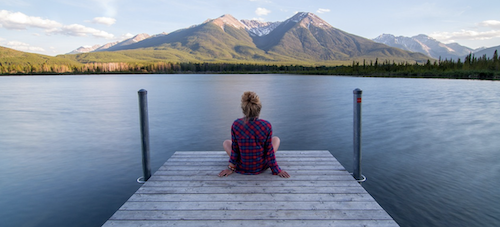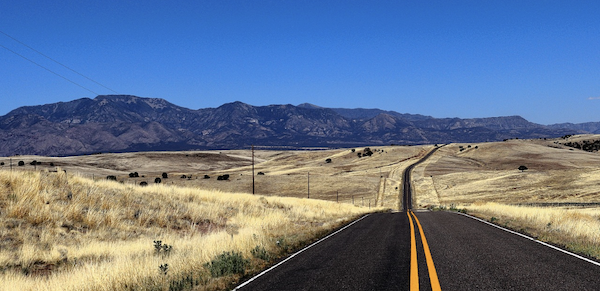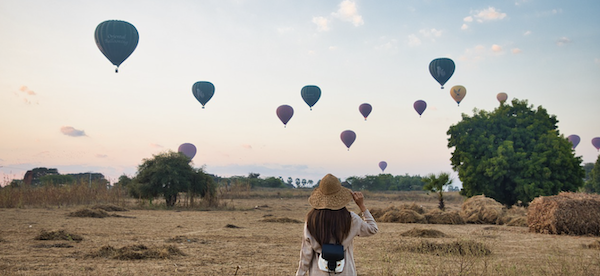The Road Ahead: What’s Next for Travel & Tourism in 2026
After several years of steady recovery, the U.S. travel market seems to be entering a new phase. While 2025 marked a year of stability in trip...
3 min read
Malcolm Griffiths : April 11, 2024

Tipped to be a major travel trend for 2024, Silent Tourism and travelers’ quest for “quietude” has surged in the media in early April 2024, thanks in large part to this highly-syndicated Associated Press article paired with a Conde Nast Traveler feature published in March 2024. The latter, written by Tasha Kleeman, defines this trend succinctly:
“Encompassing everything from silent retreats to digital detox cabins to silent walking tours and even concerts, silent travel helps us disconnect to reconnect - to nature, to our true priorities, and to ourselves. It represents a more mindful form of travel, that doesn’t leave you needing a holiday to recover from your holiday.”
Spurred on by today’s “always on, always connected” lifestyle, this trend is anticipated to grow as more consumers seek out new wellness opportunities. According to the latest research from the Global Wellness Institute, the wellness market in the U.S. is the world’s largest, worth $1.8 trillion, with Americans spending $5,300 per person in the category. Also, Precedence Research forecasts the U.S. wellness tourism market to grow to more than $421 billion dollars in value by 2032, adding up to an approximate 8% in growth over a 10-year period. Silent Tourism will undoubtedly contribute to that growth.
Here are five ways destination marketers can ensure the places they promote align and benefit from the Silent Tourism trend:
The definition of Silent Tourism is a broad one (and it’s still evolving). So, understanding what tourism products and experiences are available in your destination is essential. This can range from religious order retreats to natural areas suitable for “forest bathing,” from accommodation packages that ensure a good night’s sleep to hiking trails in remote wilderness areas. Findings could help broaden the tourist offering for your destination. For example, Bardstown, Kentucky; the Bourbon Capital of the World, is home to a religious order of Trappist Monks at the Abbey of Gethsemani which offer silent retreats and nature trails to wander in solitude.
A destination audit will also uncover product gaps in your destination, identifying opportunities to develop new tourist offerings that align with the Silent Tourism trend. Apply for official designation to Quiet Parks International; Nebraska recently secured the United States’ first Quiet Trail along the Niobrara National Scenic River Trail, where the pristine natural soundscape is largely free from man-made noise. Partner with local accommodation providers to offer themed packages and local tour operators to develop mindful walks and silent hike products.

Another way to help travelers find “quietude” is to encourage them to go beyond the overcrowded honeypots and gateways, dispersing them across your destination. In cities, parks, gardens, museums, libraries and galleries can all potentially offer places of respite. Greenways with walking and cycling trails also offer opportunities to disconnect and roam. For larger regional, state and country DMOs, road tripping along designated themed trails can be used to entice travelers. The new Tennessee Night Sky Trail, developed by the Northeast Tennessee Tourism Association, provides a reason for visitors to explore beyond the urban areas of Bristol, Kingsport and Johnson City.
Larger destinations with State and National Parks can showcase other natural attractions that are less frequented by visitors but still offer a serene outdoors experience. For example, Wisconsin’s Apostle Islands National Lakeshore allows visitors to commune with nature and disconnect from the world through paddling around its 21 islands in Lake Superior. Visitors explore caves by kayak, go lighthouse peeping, scuba dive amidst shipwrecks, hike scenic trails and camp on secluded islands. With a largely noise-free atmosphere, it’s an ideal place to “enjoy the silence.”
By promoting travel outside of peak visitation periods, destinations can introduce new ways to find solace while driving destination productivity. Deserted beaches and wilderness trails to roam, one-on-one tasting experiences without the crowds at cellar doors and distilleries, finding quiet in usually busy museums and galleries — these are all benefits for visitors when traveling in the shoulder season. The Australian state of Tasmania has won multiple awards for its Off Season campaign, enticing visitors to experience the island during the colder winter months when there are traditionally less visitors. Elements of the campaign include the promotion of short walks, stargazing, nocturnal animal spotting tours as well as food and drink experiences; all against a backdrop of the Tasmanian winter when things get wild, weird and wonderful across the island.
What is your destination doing to appeal to travelers seeking ‘quietude’? Drop me an email to share with me at malcolm.griffiths@turnerpr.com.

After several years of steady recovery, the U.S. travel market seems to be entering a new phase. While 2025 marked a year of stability in trip...

Adventure travel is a trend that’s here to stay. And it’s no longer a niche in the tourism industry. More and more travelers are looking for...

Want to know where travel is headed next year? Hilton’s 2025 Travel Trends Report provides a comprehensive look at the emerging preferences and...